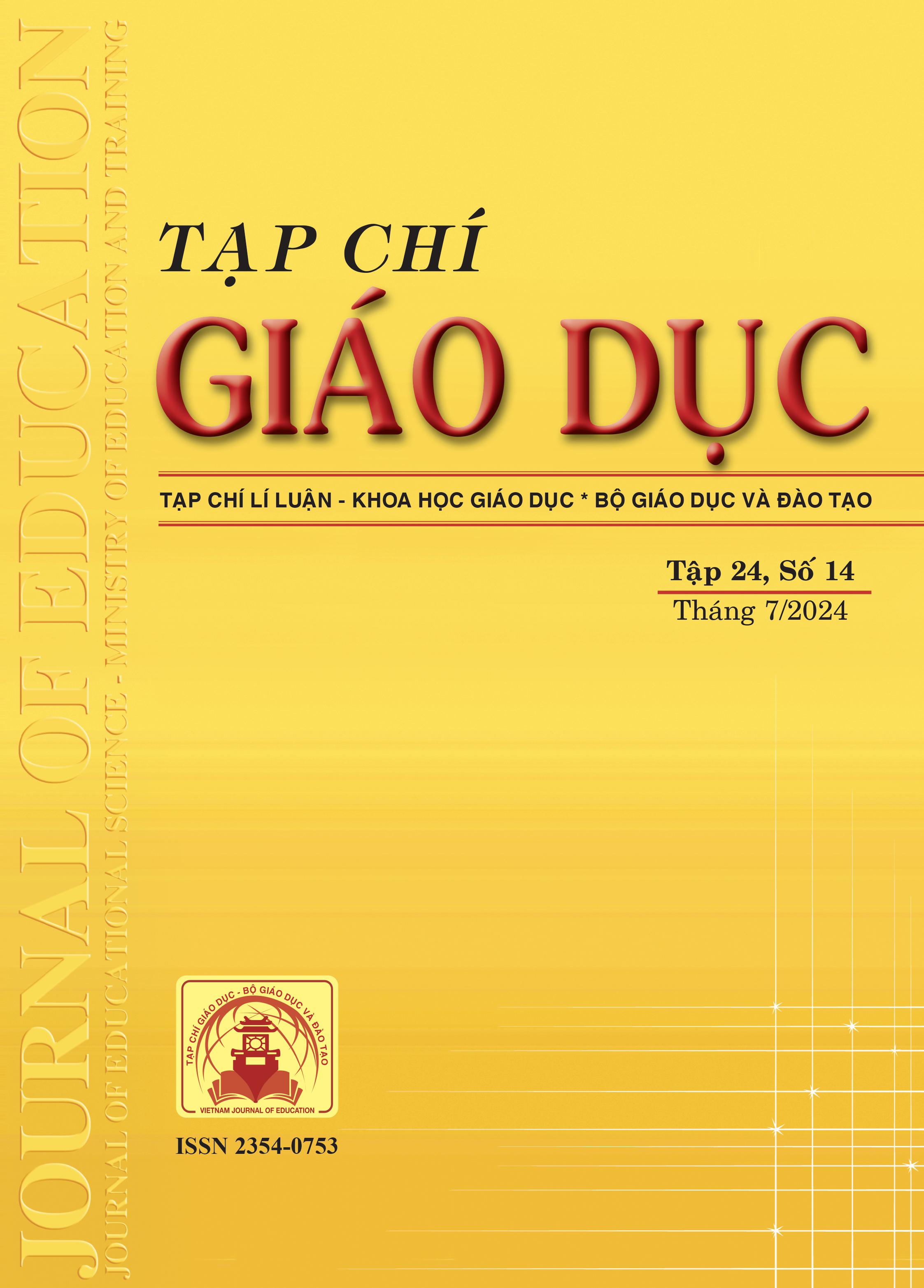Thiết kế và sử dụng video trong dạy học học phần Kĩ thuật dạy học địa lí theo mô hình lớp học đảo ngược
Tóm tắt
The flipped classroom model has been encouraged in higher education settings thanks to numerous advantages in developing students' self-study, problem-solving competence, and improving lecturers’ professional competency and learning management effectiveness. Based on the analysis of its advantages and organizational methods, the research aims to clarify the role of videos in organizing the flipped classroom model and identify some techniques for creating and using specialized videos in a Geography teaching methodology course for Geography pedagogical students, including (1) selecting content of videos, (2) selecting video making techniques; (3) creating video scripts. With both theoretical and practical research approaches and examples in training teaching competence for Geography pedagogical students, the research has specifically illustrated that readers can apply and develop further, opening up the possibility of using video support for the flipped classroom model effectively.
Tài liệu tham khảo
Bergmann, J., & Sams, A. (2012). Flip your classroom. International Society for Technology in Education. https://www.rcboe.org/cms/lib/ga01903614/centricity/domain/15451/flip_your_classroom.pdf
Brame, C. J., & Perez, K. E. (2017). Effective Educational Videos: Principles and Guidelines for Maximizing Student Learning from Video Content. CBE-Life Sciences Education, 15(4), 1-6.
Corporation for Public Broadcasting (2004). Television goes to school: The impact of video on student learning in formal education. http://www.cpb.org/stations/reports/tvgoestoschool/
Herreid, C. F., & Schiller, N. A. (2013). Case studies and the flipped classroom. Journal of College Science Teaching, 42(5), 62-66. https://doi.org/10.1187/cbe.16-03-0125
Kohler, S., & Dietrich, T. C. (2021). Potentials and Limitations of Educational Videos on YouTube for Science Communication. Frontiers in Communication, 6. https://doi.org/10.3389/fcomm.2021.581302
Lê Văn Nhương, Nguyễn Thị Ngọc Phúc, Hồ Thị Thu Hồ, Trịnh Chí Thâm (2020). Phương pháp dạy học Địa lí. NXB Đại học Cần Thơ.
Lage, M. J., Platt G. J., & Treglia, M. (2000) Inverting the classroom: A gateway to creating an inclusive learning environment. The Journal of Economic Education, 31(1), 30-43.
Long, T., Logan, J., & Waugh, M. (2016). Students’ perceptions of the value of using videos as a pre-class learning experience in the flipped classroom. Teach Trends, 60, 245-252. http://doi.org/10.1007/s11528-016-0045-4
Ngô Thị Hải Yến (2017). Cơ sở khoa học của việc sử dụng kênh hình trong dạy học Địa lí ở trường phổ thông. Tạp chí Khoa học Giáo dục Việt Nam, 3, 61-63. http://vjes.vnies.edu.vn/sites/default/files/bai15_03_2017.pdf
Nguyễn Văn Luyện (2005). Phương pháp sử dụng video trong dạy học Địa lí lớp 11 theo hướng tích cực của học sinh. Luận án tiến sĩ Giáo dục học, Trường Đại học Sư phạm Hà Nội.
Phạm Hoàng Khánh Linh, Phạm Hoàng Tú Linh (2022). Một số mô hình lí thuyết về lớp học đảo ngược. National Academy of Education Management, 14(8), 21-28.
Rajadell, M., & Garriga-Garzón, F. (2017). Educational videos: After the why, the how. Intangible Capital, 15(3), 903-923. https://doi.org/10.3926/ic.1042
Singh, K., Mahajan, R., Gupta, P., & Singh, T. (2018). Flipped Classroom: A Concept for Engaging Medical Students in Learning. Indian Pediatrics, 55(6), 507-512.
Yap, R. W. K. (2020). Developing Educational Videos: A Constructionism Approach Active Collaborative Learning in a Science Module. In book: Preparing 21st Century Teachers for Teach Less, Learn More (TLLM) Pedagogies (pp. 142-161). http://doi.org/10.4018/978-1-7998-1435-1.ch009
Zhong, J., He, J., & Liu, Z. (2015). On self-learning ability of college students and its cultivation. In 2015 International Conference on Management, Education, Information and Control (pp. 1069-1074). Atlantis Press.
Tải xuống
Đã Xuất bản
Cách trích dẫn
Số
Chuyên mục
Giấy phép

Tác phẩm này được cấp phép theo Ghi nhận tác giả của Creative Commons Giấy phép quốc tế 4.0 .












